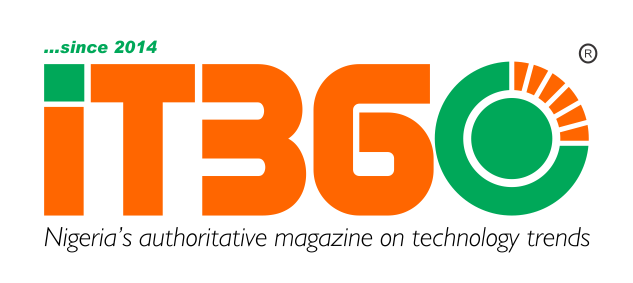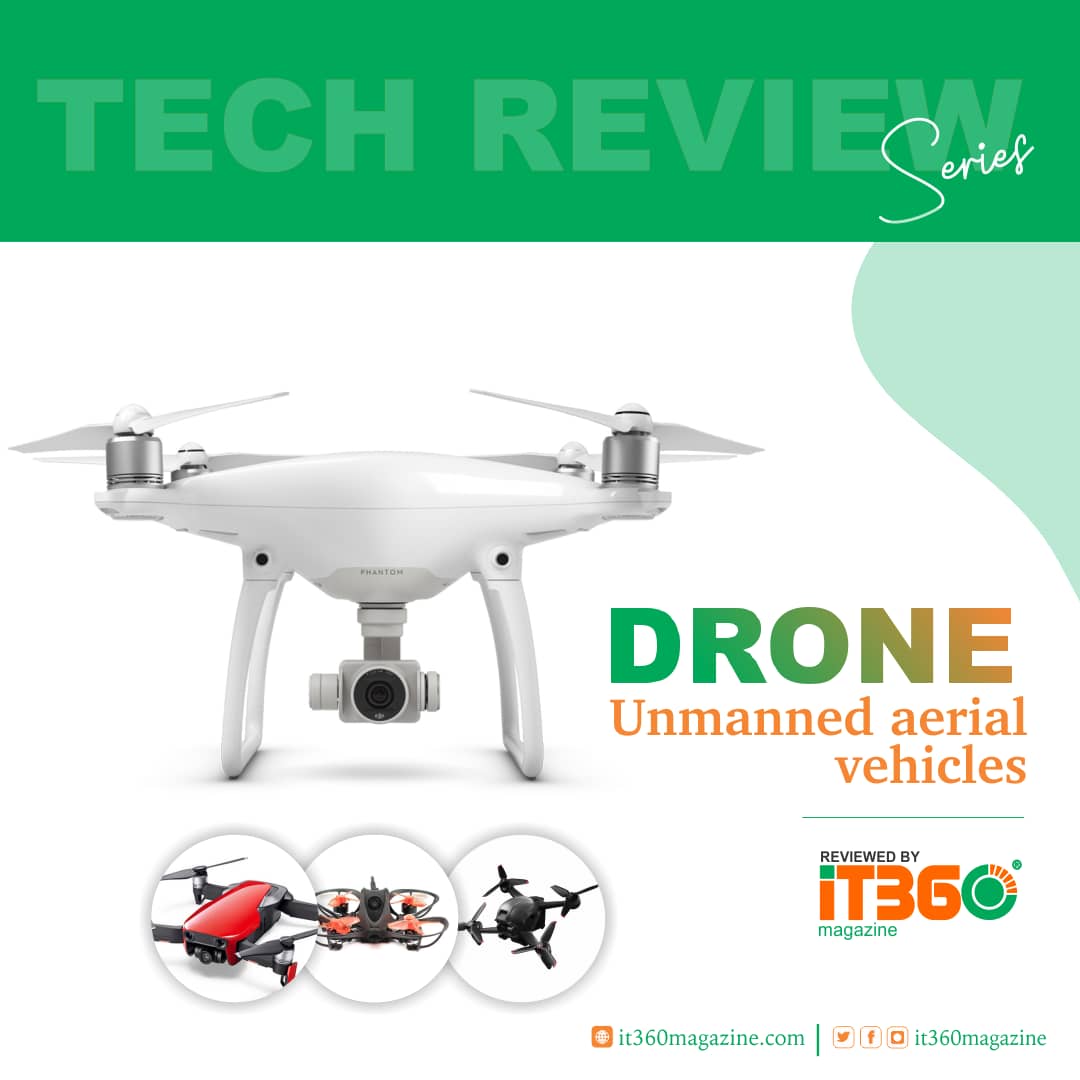Drones are unpiloted aircraft. They are also referred to as Unmanned Aerial Vehicles (UAVs). Drones are usually remotely controlled while some are capable of autonomous function. They are capable of flying up to highs usually occupied by jets. Drones are one of the machines rapidly replacing human power due to their efficiency and safety in delivery and other functions for which they serve.
UAVs are a component of the Unmanned Aircraft System. The UAS makes up the whole system which allows a drone to fly, function and communicate with the operator. The drones are usually controlled from a ground control centre. Drones do not require the physical presence of a person this enables them to do various jobs which include delivery, surveillance, rescue missions and so on that would be too dangerous for a manned aircraft to do.
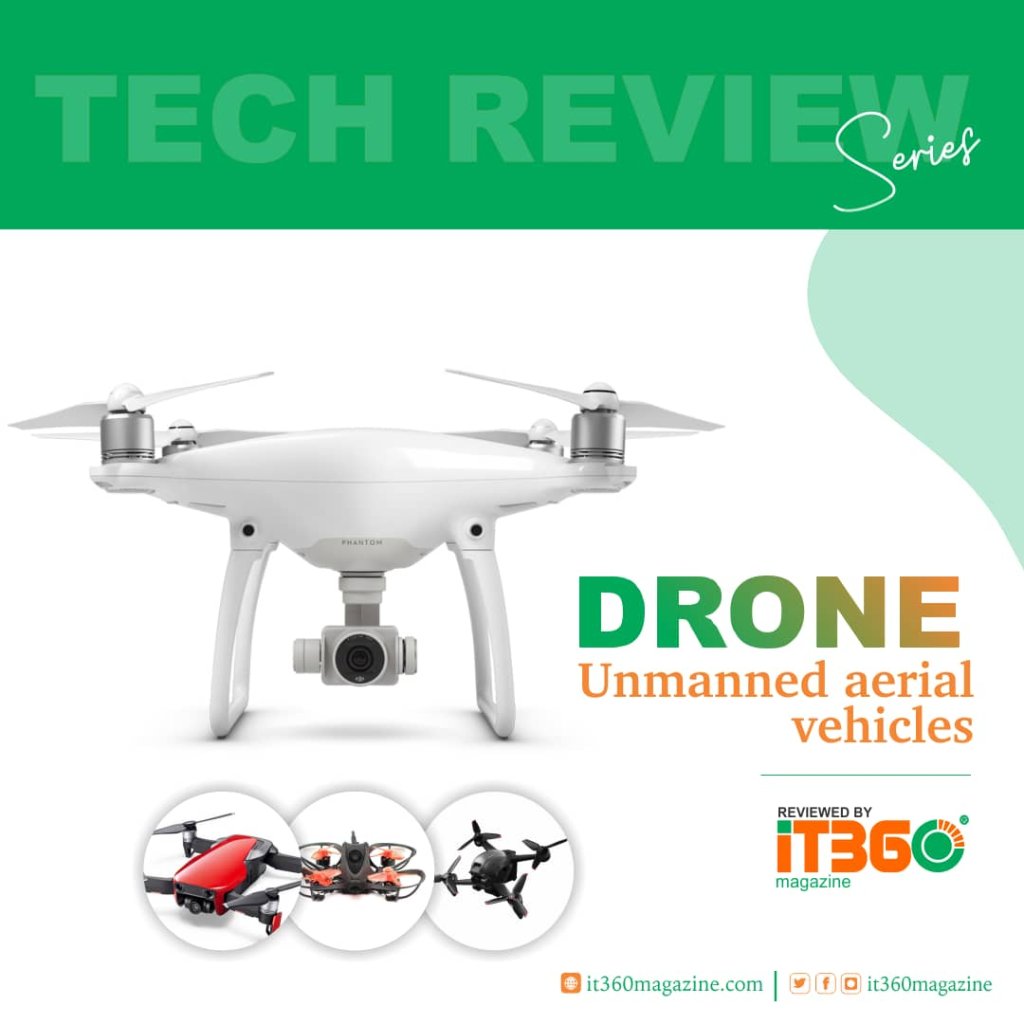
History of Drones
Drones were originally designed and used for military operations that were too dangerous or required much secrecy. Their ability to enter into the airspace at high altitudes made them very effective.
The earliest recorded use of an unmanned aerial vehicle for warfighting occurred in July 1849 with a balloon carrier, which was the earliest form of aircraft. Leonardo Torres Quevedo, a Spanish engineer, introduced a radio-based control system called the “Telekino” at the Paris Academy of Science in 1903 to test an airship of his design without risking human lives. The most significant advancements in the creation of drones began in the 20th century and were originally focused on providing practice targets for training military personnel. The earliest attempt at a powered UAV was A. M. Low’s “Aerial Target” in 1916
Nowadays, drones are used by both the military and commercial companies alike. Even individuals can get their hands on drones. Their systems have become advanced that they can serve a wide range of purposes all the while providing safety and efficiency.

How a Drone Functions
To understand how a drone Functions, first we have to understand the various types and parts of drones there are. Drones have different parts which also constitute naming their function. First, let’s talk about the types of drones. Drones are classified based on several factors
Based on Distance and Endurance
According to the distance they can cover, they are classified into a very close range which can only fly up to 5km and for about an hour, close-range UAVs can travel up to 50kms for 6 hours, short-range UAVs can fly over 150km for up to 12hours, medium range UAVs can travel 650km for up to 40hours and long-range drones have the highest endurance of over 45 hours and can travel more than 650km.
Based on Autonomy
Drones have different ranges of autonomy while some have to be remotely controlled by a user on the ground, others can are auto-controlled by satellites and several sensors.
Based on these classifications, drones have peculiar parts that assist them in their functions
Ground Control System
This is a control centre that allows the drone to fly and the UAS to operate. This just be an app, a satellite or a large screen on which the actions and systems of the UAV are controlled from. The GCS can be user controlled or operated by satellites and it controls flights, sensors, cameras and other parts.
Payload
This is the function for which the drone was employed. The payload may be a camera, delivery goods or ammunition. The type and endurance of a drone must be considered for the given payload. The load which a drone can carry depends on its size, engine and endurance.
Data link
This is the connection between the drone and the ground control system. It is the transmitter that allows communication between the drone and the control centre during flight.
Rotors
Multi-rotor drones are considered Vertical Take-off and Landing (VTOL) drones due to their ability to take off, fly, hover and land in a vertical position.
Global Navigation Satellite System
Global Navigation Satellite Systems (GNSS) like GPS and GLONASS drones can operate in both non-satellite and satellite modes, providing enhanced connectivity during operation. The GNSS allows Return to Home safety technology to function on a drone and can be activated through the ground station’s remote controller.
Gyroscope
Gyroscopes consist of a wheel that can spin in any direction on its axis and are used in drones to measure the rate of rotation. Because a gyroscope focuses on the tilt of a drone, it becomes essential for providing stability. This way, drones can maintain their direction and deliver a smooth flying experience.
Types of Drones
There are majorly four types of drones which are
Single-Rotor Helicopter Drones: these drones look like helicopters, they have a single-blade fan The single blade and ability to run on gas help its stability and fly for longer distances. These UAVs are usually used to transport heavier objects and can also be used to survey land, research storms and map erosions and wildfires.
Multi-Rotor Drones: these are the smallest and lightest types of drones in the market. They have limited distance, speed and endurance. However, they are the perfect flying vehicle for enthusiasts and aerial photographers. These drones can usually spend 20-30 minutes in the air carrying a lightweight payload, such as a camera. They are also very easy to control.
Fixed-Wing Drones: these look like normal aeroplanes, where the wings provide the lift instead of rotors- making them very efficient aero gliders. These drones usually use fuel instead of electricity, allowing them to glide in the air for more than 16 hours. Since these drones are usually much larger, and because of their design, they need to take off and land on runways just as aeroplanes do. Fixed-wing UAVs are used by the military to carry out strikes, by scientists to carry large amounts of equipment and even by NGOs to deliver welfare packages to areas that are hard to reach.
Fixed-Wing Hybrid VTOL Drones: are a mix of fixed-wing drones and rotor-based drones, featuring rotors that are attached to the wings. Being a hybrid, this type of drone provides the endurance of a fixed-wing design and the vertical flying capabilities of a rotor-focused design. The drones can carry very heavy payloads and can also hover in a spot when required.
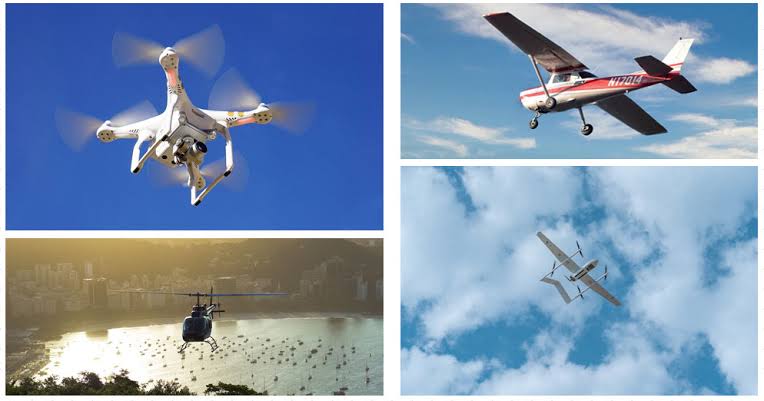
Application of Drones
Drones are now applied in almost every area that requires one form of transport or the other
Use in Photography
A lot of people now use drones for taking photos and videos. Their ability to reach altitudes which would be very difficult for a person to reach and at the same time to be able to take a bird’s-eye view of the place. Imagine taking a picture of your whole city from the comfort of your, this is something you can easily do with a remotely controlled drone. Most of the aerial view pictures you see on the net were taken by drones.
Use in Military
Initially, drones were designed for the military. There were a lot of missions that were deemed too dangerous or dirty to use real soldiers so drones were deployed for such missions. Their ability to fly undetected and also the fact that they didn’t require a person to fly made them huge assets to the military. They could carry out surveillance, search and rescue missions with no fatalities.
Use in Delivery
Drones can be used to deliver goods and medicinal or welfare packages to places that are not easily accessible to people. They are used by NGOs to deliver relief packages to isolated places or internally displaced persons during wars or natural disasters. They are now being employed by commercial companies for the delivery of goods as they’re safer, faster and more effective than using delivery people. They are used in the medical field for the transport of transplanted organs. This ensures safe and timely delivery.
Use in Space Research
Several unmanned aircraft and robots have been as space probes to other planets and solar bodies that are too harsh for humans to land or survive. Drones can easily capture images and move in these places where a human being won’t be able to go.
Use in Agriculture
Various places where agriculture seemed impossible are now flourishing, with the application of drones. Drones are used for large-scale irrigation and reforestation. In places like Australia where there have been several cases of wildfires and deforestation, drones can be employed to plant seeds, supply fertilizers and irrigate the land in a very short amount of time.
Drones are also employed in wildlife conservation. Places like the Amazon that are hard to reach can be explored with drones. They can be used to monitor animals and take note of sick animals or animals close to extinction so that they can be protected.
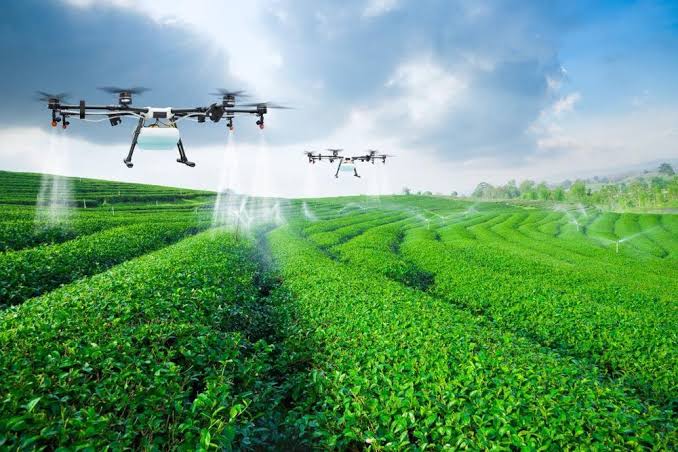
Common Drone Companies
The most common brands that manufacture drones in the market are
DJI
DJI is probably the most recognizable brand in the drone industry. Founded by Frank Wang in 2006, DJI has grown to occupy more than 60% of the drone market. It existed even before consumer drones became popular.
DJI’s first drones were the Phantom drones. But the drones that have made them more popular than ever are the Mavic series, including the Mavic Minis. One of the reasons DJI keeps growing is they are constantly updating and improving their hardware and software.
They are the pioneers of a wide range of technologies, including OcuSync, and AeroScope, among others. If there’s one company that we should watch out for in the drone industry in the next couple of years, it’s DJI.
Parrot
Parrot SA is a French company specialising in manufacturing wireless devices, including drones, chipsets, and robots. Their most notable drones are the Anafi and the Bebop drones.
However, in 2019, Parrot announced their exit from the toy drone market, a market that was and still is dominated by DJI.
Today, they are more focused on manufacturing commercial drones, and military drones, having signed a contract with the US Military to manufacture spy drones (link). Most of their toy drones are discontinued, but you can get used ones from resellers. Their drone models include
ANAFI AI
ANAFI USA
Yuneec
Yuneec joined the RC world by manufacturing fixed-wing RC aircraft. They later transitioned to building quadcopters and have become quite good at it. Yuneec drones are pretty large, featuring 6 to 8 propellers instead of the usual four propellers. Their drones are primarily used for commercial applications such as photography, inspection, and firefighting.
Their most common models are the Breeze and the Typhoon drones, but they have many other drone models. Their notable tech includes voice control in their Mantis Q drones and the Intel RealSense Visioning system, an advanced form of obstacle avoidance.
Autel Robotics
Autel Robotics is a fast-growing company in the UAV industry and a direct competitor to DJI. Autel Robotics and DJI drones are often pitted against each other due to their similarities in technology. Autel Robotics was released in 2012, and while they have not released very many drones, the models already in the market, the EVO series, look especially promising.
Hubsan
Hubsan is a popular drone company specializing in toy drones. Their drones may not be as high-quality as the DJI drones, but they offer excellent cheap entry-level drones. For less than $200, you can get an above-average Hubsan drone with a good camera, amazing flight times, and excellent build quality. Some of their notable drone models include;
Hubsan H109S X4 Pro
Hubsan X4 H107D+
Hubsan H501S
